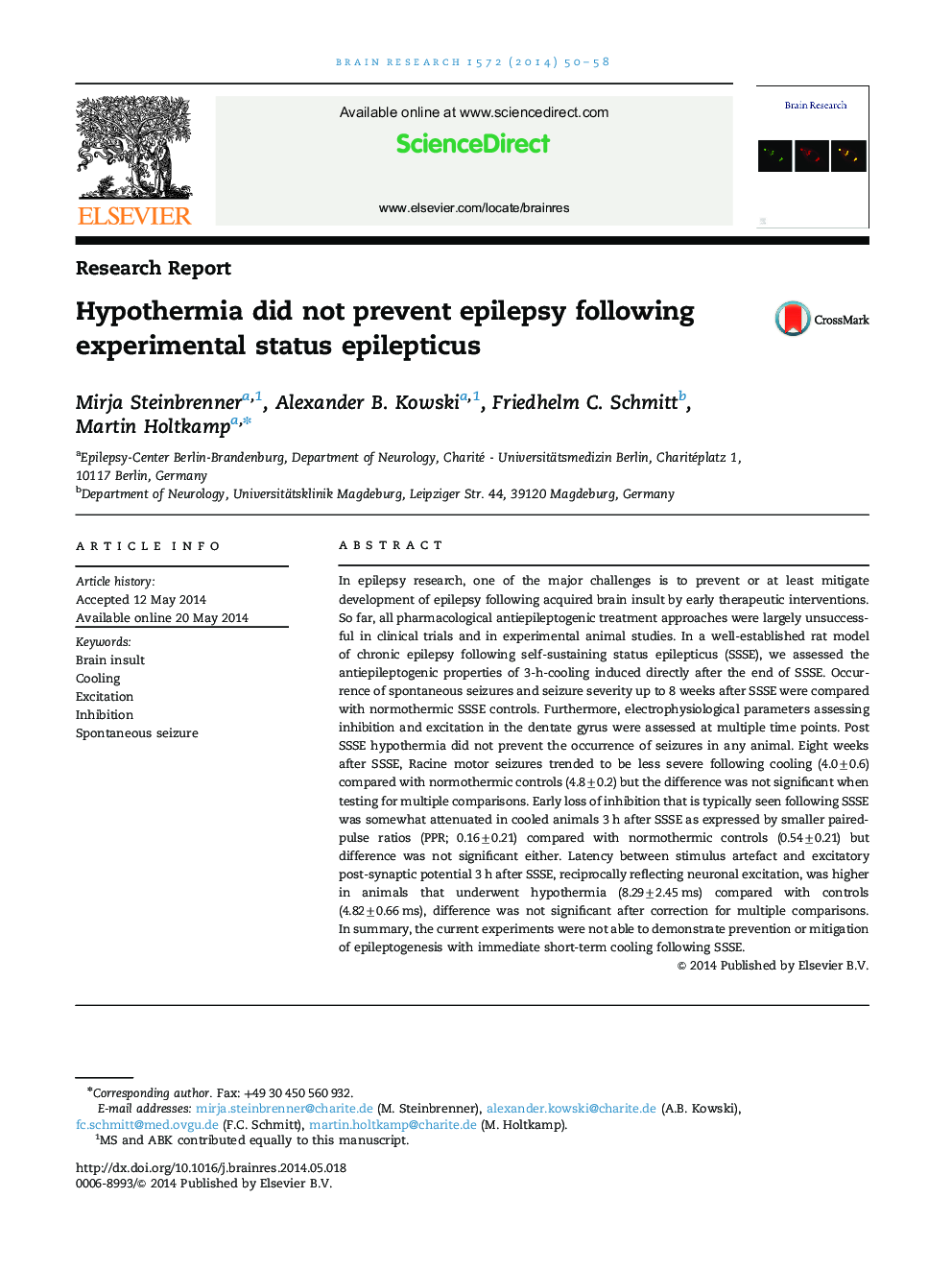| کد مقاله | کد نشریه | سال انتشار | مقاله انگلیسی | نسخه تمام متن |
|---|---|---|---|---|
| 4324215 | 1613867 | 2014 | 9 صفحه PDF | دانلود رایگان |
• We assessed if cooling following experimental status epilepticus prevents epilepsy.
• Eight weeks after status epilepticus animals with and without cooling had epilepsy.
• Hypothermia did not mitigate duration or severity of spontaneous epileptic seizures.
• Cooling did not reduce status epilepticus-induced increased neuronal excitability.
In epilepsy research, one of the major challenges is to prevent or at least mitigate development of epilepsy following acquired brain insult by early therapeutic interventions. So far, all pharmacological antiepileptogenic treatment approaches were largely unsuccessful in clinical trials and in experimental animal studies. In a well-established rat model of chronic epilepsy following self-sustaining status epilepticus (SSSE), we assessed the antiepileptogenic properties of 3-h-cooling induced directly after the end of SSSE. Occurrence of spontaneous seizures and seizure severity up to 8 weeks after SSSE were compared with normothermic SSSE controls. Furthermore, electrophysiological parameters assessing inhibition and excitation in the dentate gyrus were assessed at multiple time points. Post SSSE hypothermia did not prevent the occurrence of seizures in any animal. Eight weeks after SSSE, Racine motor seizures trended to be less severe following cooling (4.0±0.6) compared with normothermic controls (4.8±0.2) but the difference was not significant when testing for multiple comparisons. Early loss of inhibition that is typically seen following SSSE was somewhat attenuated in cooled animals 3 h after SSSE as expressed by smaller paired-pulse ratios (PPR; 0.16±0.21) compared with normothermic controls (0.54±0.21) but difference was not significant either. Latency between stimulus artefact and excitatory post-synaptic potential 3 h after SSSE, reciprocally reflecting neuronal excitation, was higher in animals that underwent hypothermia (8.29±2.45 ms) compared with controls (4.82±0.66 ms), difference was not significant after correction for multiple comparisons. In summary, the current experiments were not able to demonstrate prevention or mitigation of epileptogenesis with immediate short-term cooling following SSSE.
Journal: Brain Research - Volume 1572, 14 July 2014, Pages 50–58
